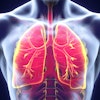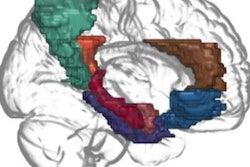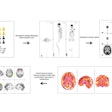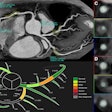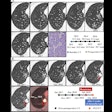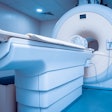Deep learning-assisted chest CT can be used to assess respiratory function in patients with amyotrophic lateral sclerosis (ALS) and is effective in patients where forced vital capacity is less reliable, according to a study published in Radiology on May 13.
A study team from Seoul National University in South Korea headed by Seok-Jin Choi, MD, PhD, and Jong-Su Kim, MD, found that chest CT with deep learning analysis could assess respiratory function in patients with ALS and support patient assessment for those with limited respiratory function.
The primary cause of mortality in ALS is respiratory failure due to muscle weakness. This makes assessing and supporting respiratory function in ALS patients critical for disease management. Forced vital capacity (FVC) serves to measure respiratory muscle function and detect dysfunction, aiding as a criterion for initiating noninvasive ventilation. However, FVC has limitations as a metric, as values may remain normal in some patients who have advanced dysfunction. Conversely, in patients with bulbar impairment, their FVC may be underestimated as the patient cannot effectively seal the mouthpiece.
While previous studies have demonstrated chest CT’s potential as an effective gauge of pulmonary function, its use with neurodegenerative disease hasn’t been examined. With FVC’s limitations in mind, especially for patients with orofacial weakness, the authors studied whether quantifying lung volume and respiratory muscle volume with chest CT using a deep-learning model could accurately assess respiratory function in patients with ALS.
The retrospective study included 261 patients diagnosed with ALS between 2010 and 2023 who underwent chest CT at a single tertiary hospital. The team analyzed chest CT images using DeepCatch, a commercially available deep learning-based body composition analysis software, to measure lung and respiratory muscle volume calculated as the lung volume index (LVI) and respiratory muscle index (RMI), respectively. The study team analyzed changes across the King stages of ALS, evaluating the association of LVI, RMI, and FVC with tracheostomy-free survival.
Based on their time-dependent receiver operating characteristic analyses, the study group found that both LVI and RMI decreased with increasing King stages and that the prognostic discrimination performance of LVI, RMI, and FVC for tracheostomy-free survival was comparable (LVI: hazard ratio [HR] = 0.998; RMI: HR = 0.992; FVC = 0.982). Furthermore, in the subgroup analysis for patients with bulbar impairment, the prognostic performance of both LVI and RMI remained significant (LVI: HR = 0.998; RMI: HR = 0.991), indicating that these could be effective metrics for assessing pulmonary function even when FVC was not reliable, the authors noted.
“Deep learning-based chest CT-derived metrics were comparable to forced vital capacity for predicting survival in patients with amyotrophic lateral sclerosis and were particularly valuable for those with bulbar impairment,” the authors wrote.
The study did have limitations, the authors noted, one being that it was conducted as a retrospective study at a single center, narrowing its generalizability. They also cautioned that chest CT is not routine for monitoring ALS progression and its use likely reflects more advanced disease in patients, introducing selection bias to the study. However, the subgroup analysis of patients undergoing chest CT as part of a diagnostic workup gave results consistent with the other findings. Other limitations -- e.g., missing data, exclusion of the diaphragm from analysis -- did not affect the consistency of the findings, either.
Nevertheless, as Amir Ali Rahsepar, MD, and Arash Bedayat, MD, wrote in an accompanying opinion in the same issue, the approach taken by Kim and Choi et al of using chest CT to measure respiratory function in ALS is of particular importance due to its effectiveness for patients with bulbar impairment: “The search for alternative methods to assess respiratory function has … become increasingly important as we strive to improve care for all patients with ALS, regardless of their ability to perform conventional pulmonary function tests.”
The authors suggested that further studies should optimize CT protocols, potentially using nonenhanced scans, to broaden the applicability of findings.
In addition, Rahsepar and Bedayat suggested longitudinal studies tracking changes in CT parameters over time and their correlations with clinical outcomes.
Read the full study here.


